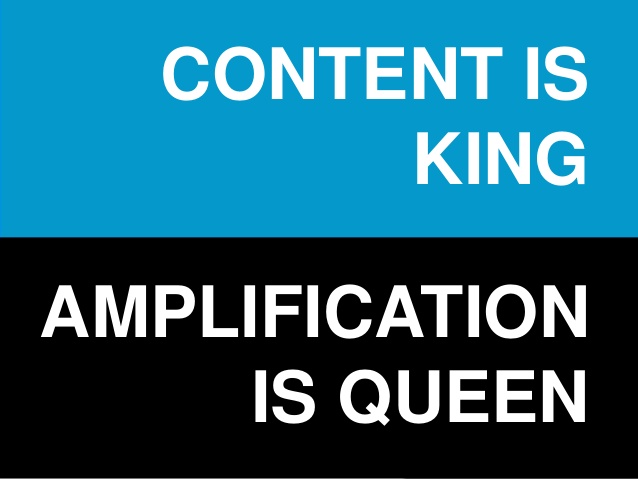Part One of the series on content marketing discussed how to set goals for a content marketing strategy, and explained that the goals relied largely upon the balance between desired outcome of the campaign, and exploiting the strengths and weaknesses of the content marketing theory. Now that the goals of the campaign have been established–therefore setting the parameters to which the campaign adheres–it’s time to focus on the content portion of the strategy. At its heart: content marketing is still a marketing strategy. We know the role that strategy plays, and the role that content plays in it, but how can the two work together efficiently, when they have separate goals. The balance between content marketing and content strategy is delicate. Kristina Halvorson defines the former as the “creation, publication, and governance of useful, usable content.” Robert Rose of the Content Marketing Institute says that it seeks “…to manage content as a strategic asset across the entirety of the organization.” Naturally, the best results occur when the content strategy is shaped within the “approach of content marketing.” The goal then becomes: how to create interesting content that fits the content marketing goals. 
Measure Twice, Cut Once – Using Keyword Research in Content Creation
The old adage of “measure twice, cut once,” stresses the art of preparation in regards to the act, and preaches patience over enthusiasm, something that can be quite difficult following all the strategizing that takes place in the infancy of a content marketing campaign. The purpose of doing keyword research–and more importantly, the role of keyword research–is simple: well-researched keywords allow for the site to get the right kind of visitors, and to rank for the keywords most applicable to the site’s overarching purpose. Choosing the right keywords is much more than just indicating which keywords a site wants to rank for, and how germain it is to the content. There are three basic questions that each keyword needs to answer: Will Searchers find the keyword useful? Or more importantly: will those consuming the content be interested in what they see? A relevant keyword ties the content to a niche, allowing for the content to be consumed. An irrelevant keyword fits a square peg into a round hole, leaving the content in a place where it cannot be admired, for the audience really isn’t interested. Will they be satisfied with the results? We’ve all been there before: visiting a site to look for a product or service, and not finding anything despite multiple search queries. Choosing a relevant keyword will minimize the chances of being overlooked by people looking for something that your company can provide. Can the traffic generated by the keyword benefit the campaign’s defined goals? The ultimate goal of keyword research is to help accomplish goals defined by the content marketing strategy. It’s easy to get bogged down in conceptualizing a list of keywords to boost traffic or conversions, and things get even more convoluted when you consider demographics, location, and the ability to serve different locales, not to mention the competitive aspect of keyword research. But with the proper research, and adherence to the goals defined, starting keyword research is simple enough. Industry-related terminology, buzzwords pertaining to a service provided, or simply phrases that are popular amongst a targeted demographic will give you the jumping-off point that you need to begin the keyword research process.
Content Gap Analysis
Where keyword research helps in content creation, as well as placing it, content gap analysis is the act of finding out what content you’re not creating. A content gap analysis speaks specifically to the goals defined at the beginning of the process. The first step to a thorough content gap analysis is an audit of your content inventory. Naturally, there will be content that is superior to others. Divide them into three categories: keep, modify, and discard. While discarding content might impact your return on investment, there are multiple factors that can render content obsolete. Once this is accomplished, you are left with content that has been deemed “keep,” or “modify.” Harken back to the target audience that you identified at the beginning of all this. Ideally, you have an idea of user persona, which can play a vital role in the content gap analysis process. According to Strategic Content, “A good user persona provides clarity on users’ needs and goals, their behaviors, or how they will interact with your brand, and even their barriers in conversation.” Identify the user journey, that is, how a user will likely interact with a website. On a less specific level, using the targeted demographics, instead. To identify what content you are not addressing, you need to look at how the remaining content speaks to the user personas or demographics that you have identified. How does it increase brand awareness? How does it help brand loyalty? By asking these questions, with the targed user persona and/or demographic in mind, you will effectively be able to identify content that is not being created, and modify the content that you have in order to address that.
The Skyscraper Technique
Brian Dean is the man behind Backlinko.com. In early-2014, Brian wrote a post where he described a method he described as “The Skyscraper Technique.” Essentially, it’s a three-step content marketing strategy. Step 1: Find link-worthy content Step 2: Make something better Step 3: Reach out to the right people While the technique isn’t redefining the content marketing industry by any means, Dean is on to something here. There is certainly no shortage of content available on the Internet; taking the mentality that there can always be improvements is what ups the ante. In the first part of the series, we discussed the role of content amplification, and to a degree: that is what The Skyscraper Technique does. While there are many methods to amplify content, The Skyscraper Method does so in a different sense; aiming instead to increase the authority of the content creator, their company, and–by association–to amplify the content for what it is: a great piece of information.
If Content is King, What is Strategy?
A successful content marketing strategy–like many things business-related–should be in a constant state of examination. Because it is at the mercy of so many different factors, what may work in one month might resonate completely differently amongst the target audience. Simply being aware of this can not only help to create successful campaign, but it can also result in a campaign that is much more effective that it would have been originally. In the end, it is the adaptive marketer that wins out. Nick Rojas is a business consultant and writer who lives in Los Angeles and Chicago. He has consulted small and medium-sized enterprises for over twenty years. You can follow him on Twitter @NickARojas. A special thank you to John Siegel for his help with the production of these contributions







